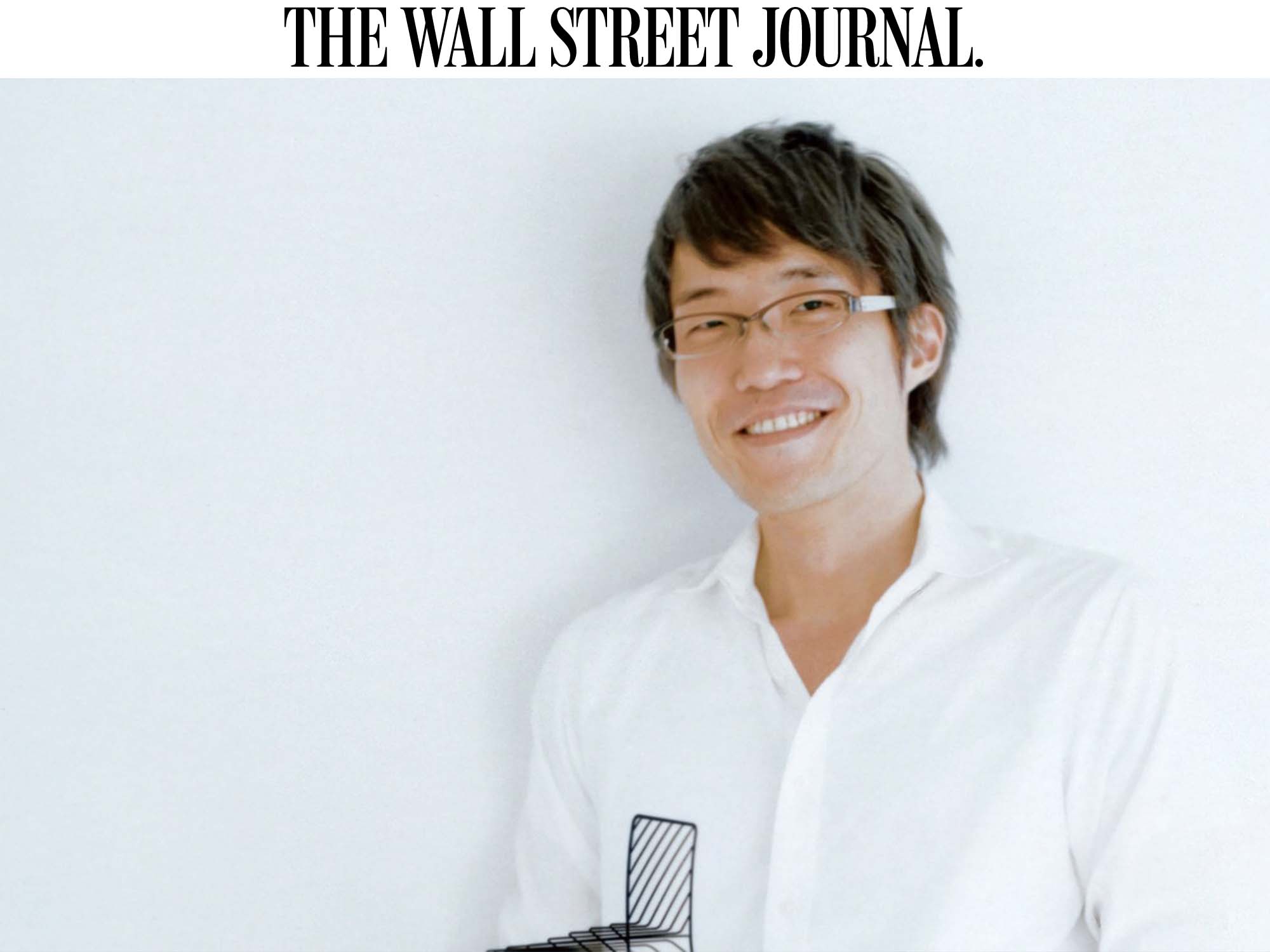By Christopher DeWolf
There are a few universally accepted principles of good design: balance, scale, contrast, unity. Oki Sato would add another: narrative.
“It’s not the shape or color, it’s about what’s behind the object,” said the 37-year-oldfounder of Tokyo-based design house Nendo.
Born in Toronto and raised in Tokyo, Mr. Sato is known for marrying the harmony and simplicity of Japanese design with an uncharacteristic irreverence. His works have been collected by the Museum of Modern Art in New York and the Centre Pompidou in Paris, and past projects include a lacquered version of the ubiquitous Cup Noodles container and a collection of knit-covered maple wood furniture inspired by Winnie the Pooh.
Mr. Sato is extraordinarily prolific, and examples of his projects abound. Just last year, he unveiled 56 new products and interiors with Nendo: among them, bottles for a coffee-flavored beer, the interiors of a department store and a champagne cooler inspired by traditional Japanese spa buckets made of bamboo.
One of his latest projects, called Fusion, is a furniture collection for Danish company BoConcept. He recently spoke to the Journal about Japanese versus Scandinavian design, juggling up to 300 projects at a time, and making people smile.
What’s the concept behind Fusion?
[We had] a very open brief. It is about fusing different traditions and aesthetics, fusing two different cultures, Danish and Japanese. It’s interesting because Japanese design has been strongly influenced by Scandinavian design and on the other side, Danish architecture has been influenced by Japanese architecture. It’s not about working on a single idea but bringing two different elements and mixing them together.
Usually when I work with some companies, for example if I worked with Glas Italia, I would make glass furniture, and if I work with a wooden-furniture manufacturer, I would make wooden furniture. But in this case, BoConcept is able to make everything that links to the living environment. I was able to make clocks and sofas and cushions, use different materials like wood and metal and ceramics. That was something new for me.
Why do you like working with so many different clients?
That is kind of linked with the key word, which is fusion. Nendo means “play dough, “almost—it’s about mixing different colors and creating different shapes. It’s the flexibility of designing things. I believe that when we work on so many different fields they influence each other. When I find a new material or technology, I can use that for furniture or interior design. It’s a way to not focus on certain things and to be able to find new ideas within different projects.
The reason why I work on so many projects is I feel that the more output I have, the more input I can have. The more ideas I deliver, the more it creates a flow that makes me able to find new ideas.
When you started Nendo you were just 24. What has changed in your approach to design since then?
Actually, nothing much has changed. It’s really that same process. I look for small things that can gradually develop to make big changes. It’s like the media—before it was the radio and television and newspapers that provided information, but now everyone can provide information. It’s the small things that people notice—if somebody on the other side of the Earth finds something interesting, the next day everyone knows. It’s like a virus.
The process is more or less the same for design. We try and think of small ideas that become like a virus. I’m trying to look for smaller and smaller ideas that affect people’s emotions in a way. I think it’s those small things that make people’s lives so rich and comfortable. It’s always about giving people a small smile in the end.
How do you achieve that small smile, that “a-ha” moment?
I’ve noticed that rooting work in everyday life really helps me. If you keep on repeating things every day you notice the small differences, and I feel those small differences become my design sources in a way. I don’t see new things when I travel too much; it’s better if I take a walk around my house and go to the same cafes every day. Of course, when I visit factories and different companies, I try to look for the small things that are hidden, things that people don’t really care about or things that people have already forgotten.
A lot of companies are really interested in new techniques and materials, but it’s not about finding new things—there is always something new. I try to look for old things, old techniques that are not used anymore, old materials that can be mixed to create something new and be very competitive in the market as well. It’s not about sketching and making renderings, it’s more about observing and looking at things.
What’s an example of this?
For instance, blowing glass has existed for a very long time. I’ve been visiting glassblowers in Prague and I noticed that everyone was blowing air into the glass—obviously. Then I thought, what if you sucked the air out from the glass? Everyone was laughing because they’d never done anything like that, but when they sucked the air out of the glass it creates very beautiful wrinkles on the outside of the glass. That’s how we made a very beautiful lamp out of glass.
Did you ever expect to be considered a star designer?
I still don’t think I’m a star designer. I’m just focusing on what I’m doing at this moment. I’m working on 290 to 300 projects at the moment but every project is really different. It’s really exciting. I don’t know how I am doing this, to be honest. It’s not that every project is very short term—some continue on for four or five years and others end in a few days. It’s really about focusing on what I’m doing at the moment.










